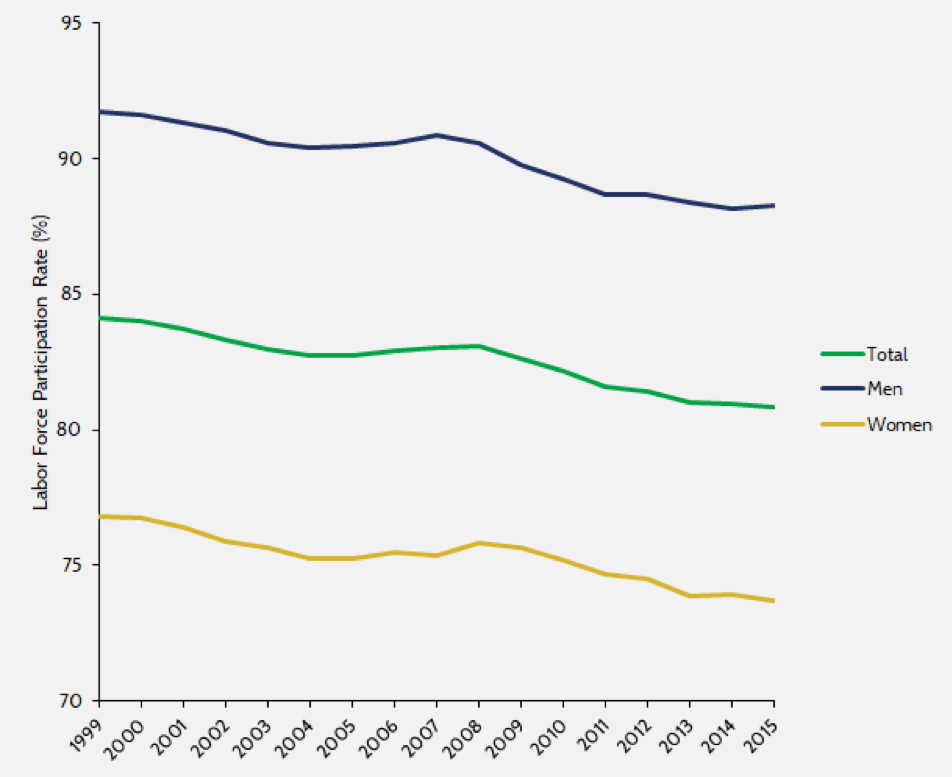A study published by the American Action Forum (AAF), a conservative think tank, found the opioid crisis caused the American economy to lose nearly a million workers, 12.1 billion work hours, and $702 billion. The study reviewed the impact the opioid epidemic had on labor force participation and output between 1999 and 2015, making the average annual loss $43.9 billion. These losses are skewed toward the most recent years as the crisis worsened over time, which should only heighten the attention employers give to the issue.
According to the findings, 425,900 men and 493,500 women of prime working age (between 25 and 54) who were employed or looking for a job left the labor force by 2015 because of opioid addiction. This represents 25% of the total decline in U.S. labor force participation. “The U.S. economy depends on prime-age workers because they are among the most productive workers in the labor force,” AAF wrote. “Yet, the growth of opioid dependency over the past two decades has contributed to the falling labor force participation rate of prime-age workers.”

The survey also reviewed the impact on output and found that the U.S. economy lost $702 billion in gross domestic product (GDP) due to opioid-related losses in productivity. These losses, similar to presenteeism (being less productive than capable due to being sick), are often hard to see and may go undetected by employers.
All employers should consider the impacts the crisis is having on their bottom line, especially those in areas most impacted by the epidemic. For those employers wanting to directly combat the negative impact opioids are having on their business, there are a number of free resources available from local health agencies and health departments that may be useful. Most importantly, employers should make sure to avoid creating a culture where employees feel like they cannot talk about the problem. This makes resolving the challenges even more difficult.
For those employers who feel that their employee demographic or geographic area is not being impacted by the crisis, they should think again. Although certain populations and demographics are being affected greater than others, the opioid epidemic is widespread and growing. If the impacts are not visible to employers now, they may start seeing them soon if they do not take action.












